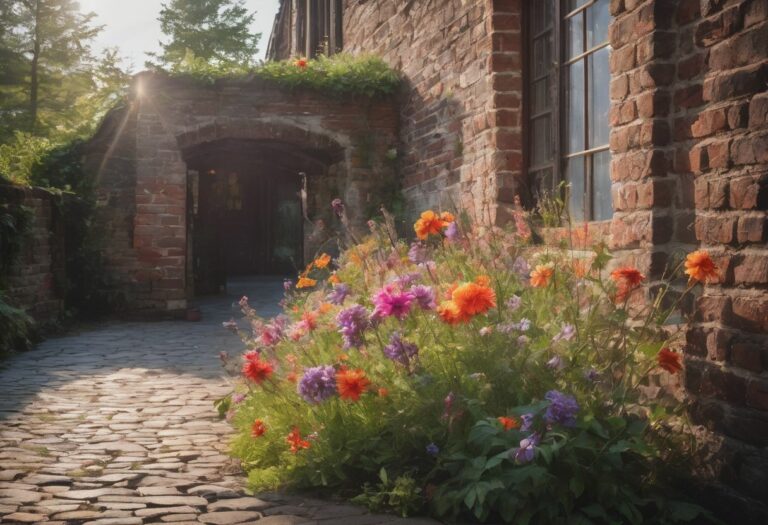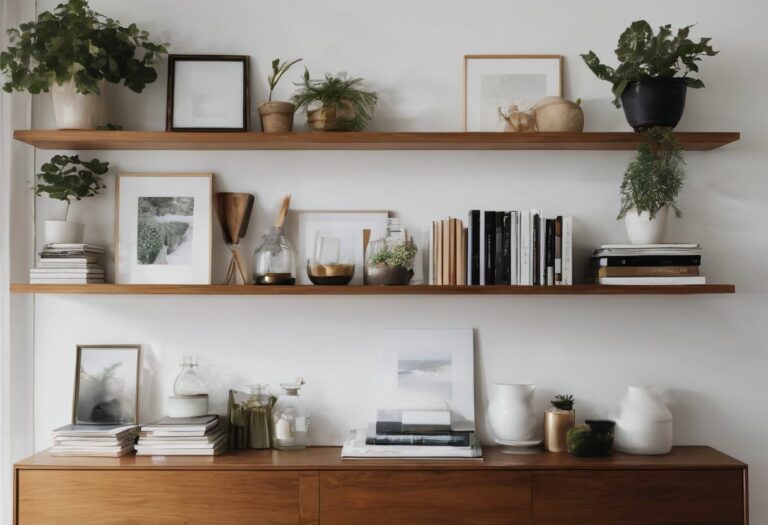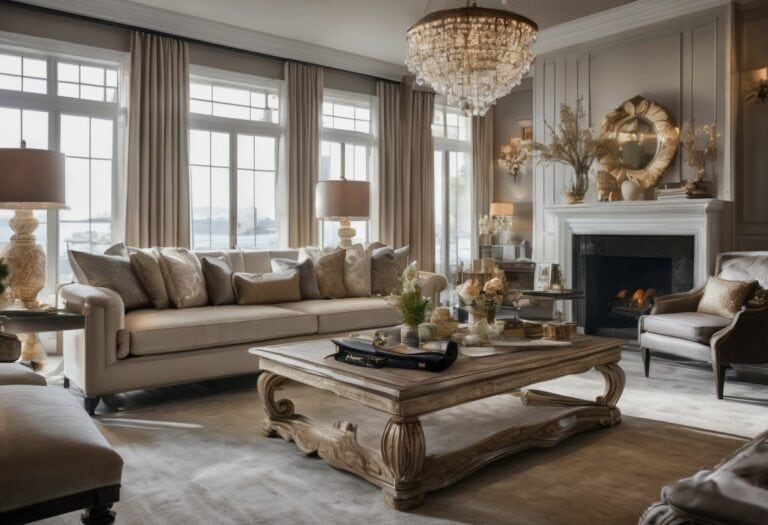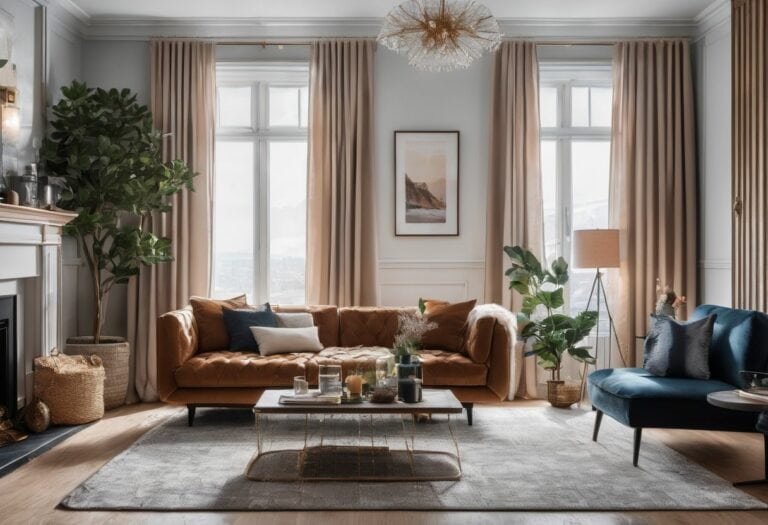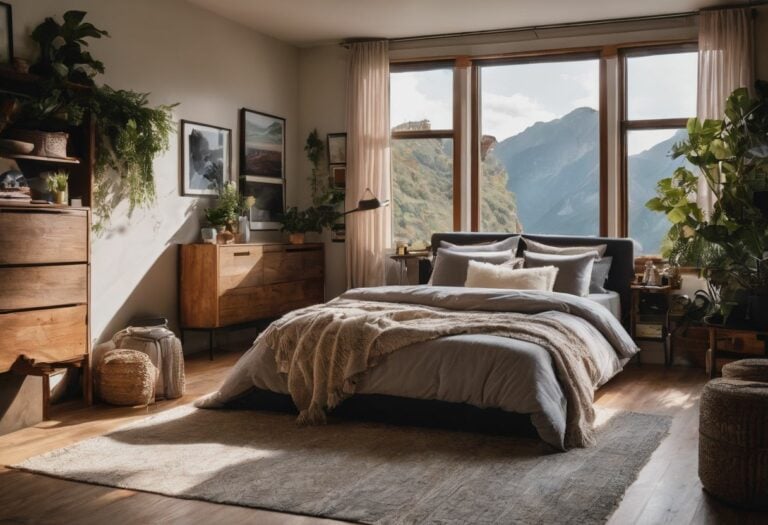Why Is Minimalist Interior Design So Popular? Exploring the Latest Trends
In today’s fast-paced world, the spaces we inhabit have become sanctuaries for our well-being. With cluttered rooms and overstuffed cabinets often leading to increased stress and anxiety, many of us seek a tranquil retreat to come home to.
This is where minimalist interior design steps in – with its serene approach that has captured the hearts of homeowners seeking simplicity and calm.
Why Is Minimalist Interior Design So Popular?
Minimalist interior design strips away excess, focusing on what truly matters in a living space. It emphasizes clean lines and essential furnishings that lead not only to an aesthetically pleasing abode but also speak to a lifestyle choice about reducing excesses from our lives.
This blog will delve into why embracing less can indeed bring more joy into your surroundings—a concept Marie Kondo would certainly approve of—and how this trend continues to gain momentum in 2023.
Get ready to transform your living room into an oasis of peace!
Defining Minimalist Interior Design
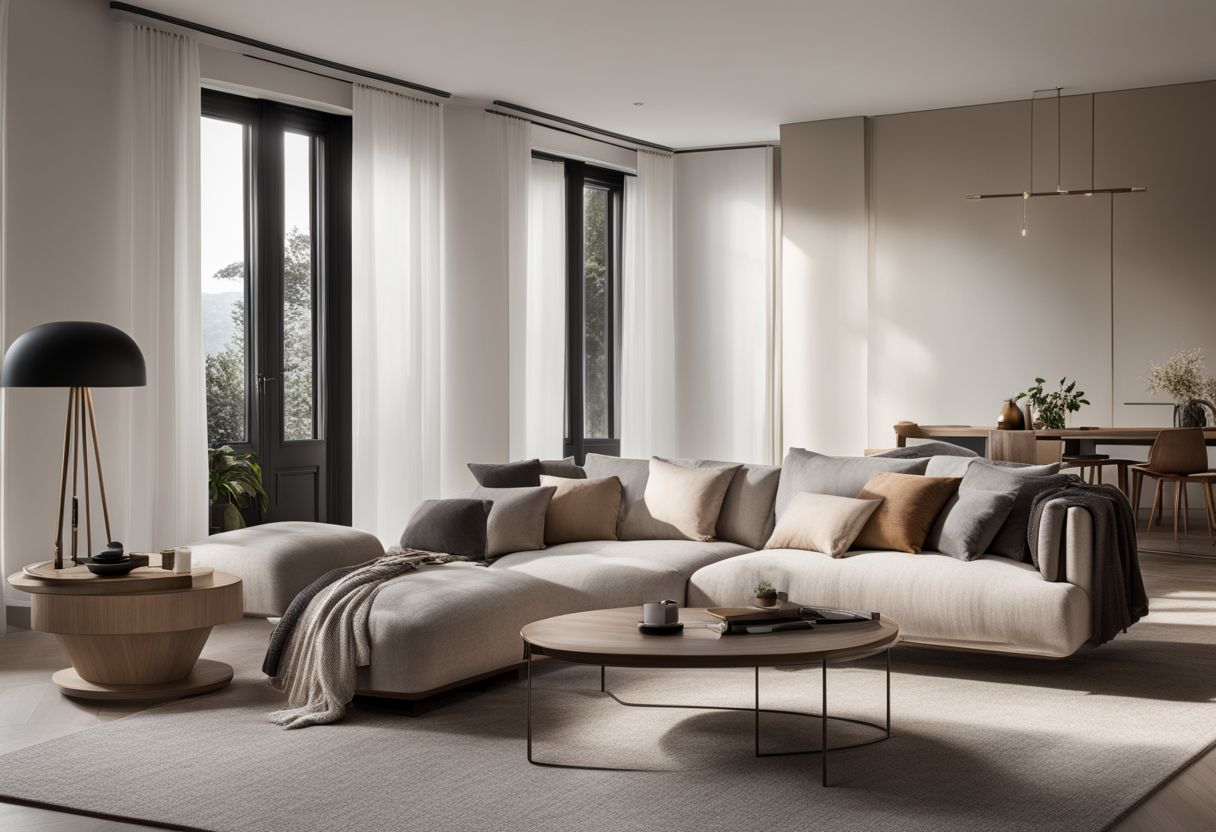
Minimalist interior design is a style that focuses on simplicity and functionality, prioritizing clean lines, open spaces, and a sense of tranquility. It embraces the philosophy of “less is more,” utilizing neutral colors, natural materials, and minimal decor to create serene and uncluttered living environments.
Key Characteristics and Elements
Minimalist interior design is all about keeping things simple and beautiful. It focuses on the idea that “less is more” to create peaceful spaces.
- Neutral color palette: Spaces use colors like white, beige, or gray to make rooms feel calm and spacious.
- Less clutter: There’s not much stuff around. Everything has a place, and you only see what you need.
- Natural materials: Wood, stone, and cotton add warmth and texture without being too busy.
- Clean lines: Furniture and decorations have straight, smooth edges, making them look sleek.
- Open space: Rooms aren’t full of things. There’s plenty of room to walk around and relax.
- Function over form: Every item in a minimalist space has a job. If it’s not useful, it doesn’t belong there.
- Simple decor: Instead of lots of small items, there might be one beautiful piece of art or a single vase with flowers.
- Quality over quantity: Fewer but nicer things mean each piece can be more special and well-made.
The Philosophy of “Less is More”
The “Less is More” idea in minimalist interior design means making spaces with fewer things but choosing those things carefully. This helps make rooms that feel clean, calm, and easy to use.
People who like this style enjoy how it puts the spotlight on the beauty of simple shapes and good workmanship.
Choosing what you need and love is key in this philosophy. It’s not about getting rid of everything or living without comfort. Instead, it’s about focusing on quality over quantity.
In a room designed this way, every chair, table, or lamp has a reason for being there. They all work well and bring joy without making a space feel too full or busy.
This way of thinking matches up well with caring for our planet because it encourages people not to buy more than they need. This can mean less waste and using resources wisely. Next up: The Rise of Minimalism in Modern Interiors shows how this approach got popular today.
The Rise of Minimalism in Modern Interiors
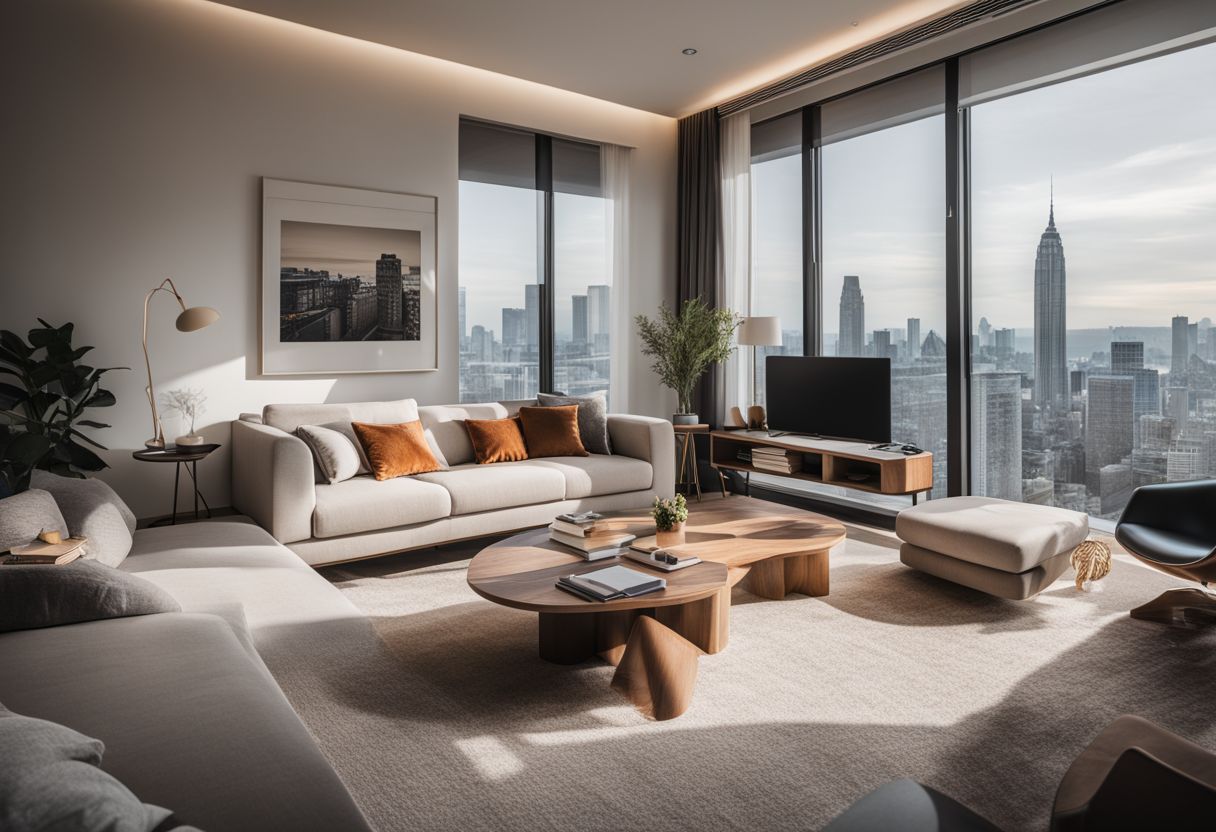
Minimalist interior design has seen a significant rise in popularity, drawing inspiration from Japanese and Scandinavian design principles. This movement has been further fueled by the minimalist art and architecture that emphasize simplicity, functionality, and clean lines.
Influence of Japanese and Scandinavian Design
Japanese and Scandinavian styles have both played a big role in making minimalist interior design popular. The Japanese bring Zen ideas that focus on simplicity and nature, while the Scandinavians add clean lines and light colors to spaces.
Together, they create Japandi style, which is cozy but also super simple. This look uses fewer things but chooses them carefully to make rooms feel calm and open.
Japandi mixes Japan’s love for rich colors with Scandinavia’s cool tones. It gives us peaceful places without much stuff where everything has its own spot. People like this way of decorating because it helps them relax and makes their homes easy to take care of.
It shows beauty in simple things and how less can be more in our busy lives.
The Minimalist Movement in Art and Architecture
The influence of Japanese and Scandinavian design also had a profound impact on the minimalist movement in art and architecture. In the 1960s, this movement emerged in the USA, characterized by simple geometric shapes and principles of simplicity and purity.
Artists created non-traditional paintings and sculptures representing objects in a new, minimalistic way. With an emphasis on unadorned style, Minimalism was embraced by architects and interior designers alike, leading to a revival of system-bound concepts within both fields.
Minimalist architecture focuses on clean lines, open spaces, and natural light to create sleek and functional designs. The philosophy is rooted in stripping away unnecessary elements to reveal the essence of form.
Psychological and Practical Benefits of Minimalism
Minimalist interior design offers numerous psychological and practical benefits. By reducing visual clutter and simplifying the living space, it promotes mental clarity, reduces stress, and enhances focus on functionality and practicality.
Additionally, minimalism can lead to a simplified lifestyle and easier maintenance of the home environment.
Mental Clarity and Reduced Stress
Minimalist interior design promotes mental clarity and reduces stress by creating a calming and uncluttered environment. This style allows for better focus on functionality and practicality, reducing the chaos that can lead to increased anxiety and stress.
Embracing minimalism leads to fewer distractions, which in turn positively influences mental and emotional well-being. By incorporating neutral color palettes, natural materials, and clean lines, minimalist spaces offer a serene atmosphere that contributes to reduced stress levels.
The lifestyle of minimalism involves reducing possessions, increasing happiness, simplifying maintenance tasks at home, promoting overall mental health through decluttering spaces.
Enhanced Focus on Functionality and Practicality
Simplicity in design promotes mental clarity and reduces stress, but it also enhances practical aspects. Minimalist interiors emphasize functionality and practicality, making daily activities more efficient.
With fewer distractions and clutter, it’s easier to focus on tasks at hand and find what you need without unnecessary items getting in the way.
In a minimalist space, every item has a purpose, contributing to an organized and efficient environment that supports productivity. This intentional approach not only streamlines daily routines but also reduces the time spent on maintenance, allowing for a more balanced lifestyle.
Simplified Lifestyle and Maintenance
Minimalist interior design advocates a simplified lifestyle and reduced maintenance. By decluttering living spaces, the minimalist approach encourages a serene and untroubled environment, reducing stress and promoting mental well-being.
Adopting minimalism can lead to an increased sense of satisfaction with life while minimizing the burden of constant upkeep.
Embracing minimalism also means easier maintenance as there are fewer items to clean, organize, and manage. This streamlined approach allows for more efficient use of time and resources, leading to enhanced daily ease and contentment.
The Aesthetic Appeal of Minimalist Spaces
Minimalist spaces are renowned for their aesthetic appeal, creating a sense of spaciousness and airiness through the use of neutral color palettes and natural materials. They embrace clean lines and uncluttered spaces, promoting a calming and visually striking environment.
Creation of Spacious and Airy Environments
Minimalist interior design aims to create spacious and airy environments by utilizing clean lines and negative space. With the use of neutral colors and sleek lines, even smaller spaces can achieve an open and expansive look.
The concept of “less is more” in minimalist design promotes a sense of simplicity and openness in interior spaces while embracing a serene aesthetic.
Neutral Color Palettes and Natural Materials
Neutral color palettes, including shades of white, beige, and gray, are central to minimalist interior design. These colors create a sense of calm and tranquility in living spaces.
Additionally, natural materials like wood, stone, and metal are fundamental in minimalist design. They bring an organic warmth to the space while promoting a connection to nature. This emphasis on neutral colors and natural materials aligns with the minimalist philosophy of simplicity and functionality.
This deliberate use of muted tones fosters a serene atmosphere while allowing the focus to remain on the essential elements within the space. It also contributes to creating an open and airy environment that characterizes minimalist interiors.
Embracing Clean Lines and Uncluttered Spaces
Minimalist interior design emphasizes clean lines and uncluttered spaces. Every element in a minimalist space has a purpose. You’ll often find smooth surfaces and geometric shapes dominating the design aesthetic, creating a sense of order and simplicity.
This approach aims to eliminate unnecessary distractions, promoting a feeling of calm and serenity within the living environment.
By embracing clean lines and uncluttered spaces, minimalist interiors achieve an open and airy ambiance. Neutral color palettes contribute to this spacious feel while natural materials add warmth and depth to the surroundings.
Benefits of Minimalism in Interior Design
Minimalist interior design brings several benefits to your home. By decluttering, it creates a sense of calm and peacefulness, reducing stress and promoting mental clarity. Embracing simplicity also allows for easier maintenance and cleaning, making daily life more manageable.
Additionally, minimalism enhances the functionality of your living space by focusing on practicality and utility within the design.
The aesthetic appeal of minimalist interiors is characterized by spaciousness, airiness, and tranquility. The use of neutral color palettes and natural materials evokes a soothing ambiance while clean lines contribute to an uncluttered environment.
This style not only promotes visual harmony but also supports a simplified lifestyle that can improve overall well-being.
Incorporating Minimalism into Your Home
When incorporating minimalism into your home, it’s essential to focus on decluttering and simplifying your space. Consider implementing multi-functional furniture and maintaining an organized layout to achieve a clean and streamlined look.
Tips for Achieving a Minimalist Look
To achieve a minimalist look in your home, consider the following tips:
- Declutter your space by getting rid of items that you don’t use or love.
- Choose furniture with clean lines and multifunctional purposes to maximize space.
- Embrace neutral color palettes and natural materials to create a sense of calm and simplicity.
- Focus on quality over quantity when selecting decor and furnishings.
- Incorporate plenty of storage solutions to keep surfaces clear and maintain an uncluttered appearance.
- Introduce intentional lighting that enhances the overall ambiance without overwhelming the space.
- Display a few carefully chosen pieces of art or decor, avoiding overcrowding walls or shelves.
- Integrate plants to bring a touch of nature indoors while adding visual interest without cluttering the space.
Balancing Minimal Aesthetics with Personal Comfort
When creating a minimalist interior that’s also comfortable, it’s essential to balance clean aesthetics with warmth. Incorporating personal touches like cozy textiles and inviting furniture can soften the starkness of minimalism while still maintaining its essence.
Utilizing warm woods, plush rugs, and soft throw blankets can add layers of comfort to minimalist spaces without sacrificing their sleek appeal. By carefully selecting decor pieces that hold personal significance, such as family heirlooms or meaningful art, you can infuse your space with personality while still adhering to a minimalist aesthetic.
Another way to achieve this balance is by ensuring that every piece serves both form and function in your space. Choosing multi-functional furniture not only maximizes the use of space but also ensures practicality without compromising on style.
Addressing Common Misconceptions about Minimalism
Minimalism doesn’t mean being bored or lacking fun. It’s about removing unnecessary tasks that drain our time and energy, not joy or excitement. Minimalism isn’t a brand-new 21st-century idea.
There are different ways to live minimally, rather than just one set lifestyle.
Some people think minimalists can only own 100 items or must buy used things. These are common misunderstandings. The minimalist look is all about embracing simplicity and intentionality for a balanced life.
Another mistaken belief is that minimalism sacrifices style and personality in the name of simplicity.
It’s important to debunk these myths because they don’t capture what minimalism truly means – which includes more than meets the eye.
Conclusion
Minimalist interior design is gaining popularity in 2023 due to sustainability, mindfulness, and self-care trends. Its emphasis on clean lines, open spaces, and a minimal color palette creates a serene home environment.
This design trend aligns with the current focus on simplicity, balance, and harmony in living spaces. As people seek calmness and tranquility at home, minimalist design provides an ideal solution for creating serene and balanced interiors.
By embracing minimalist principles, individuals can cultivate peaceful and harmonious living environments that support their well-being while staying relevant to the trends of 2023.
Discover how a minimalist approach can transform your home’s interior by exploring the benefits of minimalist design.
FAQs
1. What is minimalist interior design?
Minimalist interior design is a style that uses simple and few items to decorate homes. It makes spaces look clean and calm.
2. Why do people like minimalist design so much?
People like minimalist design because it helps them live with less stuff, keeps their homes tidy and clean, and can be kinder to the Earth by using fewer things.
3. How did Marie Kondo help make minimalism popular?
Marie Kondo wrote a book called “The Life-Changing Magic of Tidying Up” which teaches people how to keep only the things that make them happy. This idea fits well with minimalist living.
4. Do social media influencers affect the popularity of minimalism?
Yes! Influencers on Instagram and other places show pictures of their pretty, simple rooms which makes more people want to try minimalist décor in their own homes.
5. Can you find examples of minimalist design in buildings or furniture?
Yes! There’s Danish furniture by Arne Jacobsen, Donald Judd’s clear designs, tiny houses’ clever use of space, and even the Fallingwater house shows how nature can be part of a home’s look.
6. Is there a deeper meaning behind minimalism besides looking nice?
Yes, many believe having fewer things helps us focus on what really matters in life without being distracted by too much stuff — ideas found in Buddhism or discussed by philosophers like Seneca.


